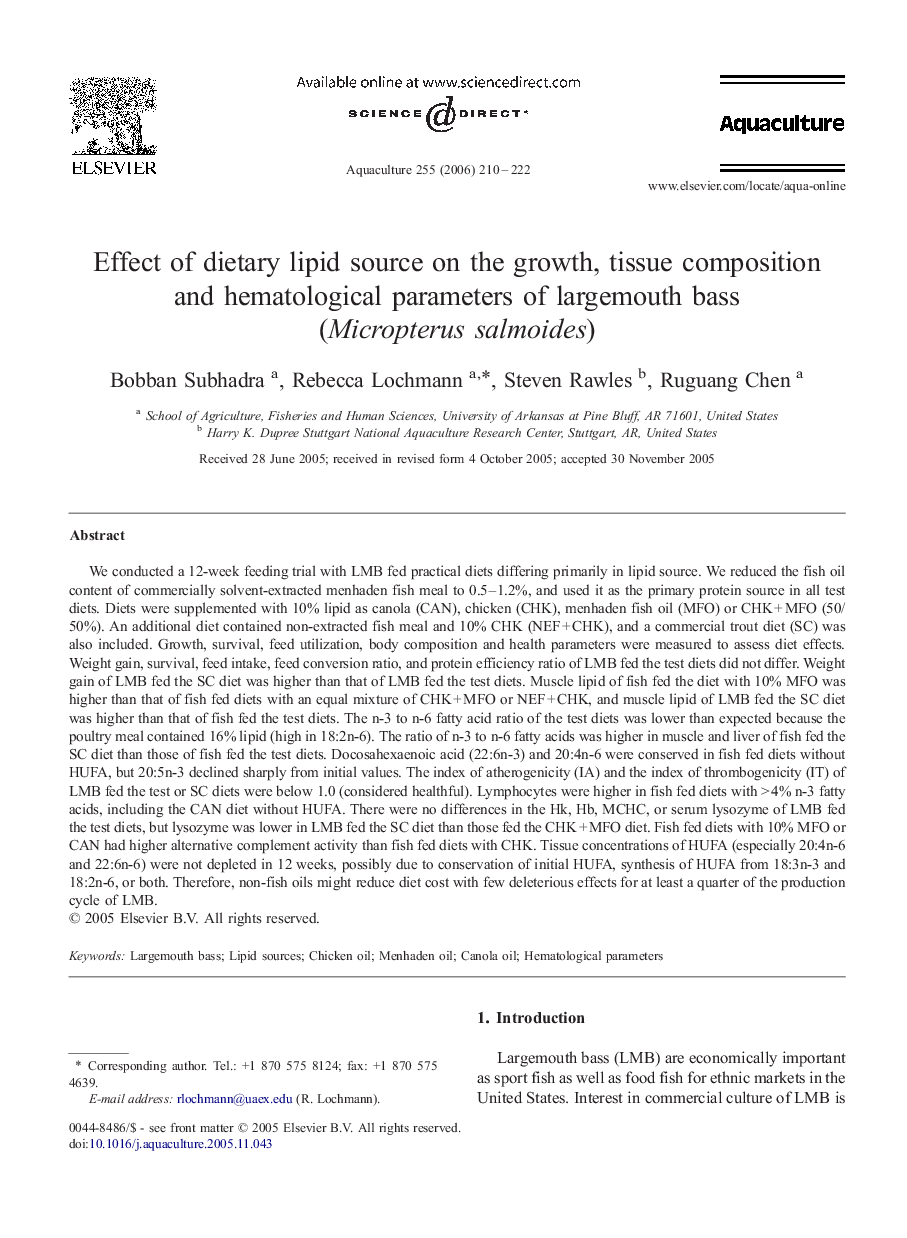| Article ID | Journal | Published Year | Pages | File Type |
|---|---|---|---|---|
| 2426073 | Aquaculture | 2006 | 13 Pages |
We conducted a 12-week feeding trial with LMB fed practical diets differing primarily in lipid source. We reduced the fish oil content of commercially solvent-extracted menhaden fish meal to 0.5–1.2%, and used it as the primary protein source in all test diets. Diets were supplemented with 10% lipid as canola (CAN), chicken (CHK), menhaden fish oil (MFO) or CHK + MFO (50/50%). An additional diet contained non-extracted fish meal and 10% CHK (NEF + CHK), and a commercial trout diet (SC) was also included. Growth, survival, feed utilization, body composition and health parameters were measured to assess diet effects. Weight gain, survival, feed intake, feed conversion ratio, and protein efficiency ratio of LMB fed the test diets did not differ. Weight gain of LMB fed the SC diet was higher than that of LMB fed the test diets. Muscle lipid of fish fed the diet with 10% MFO was higher than that of fish fed diets with an equal mixture of CHK + MFO or NEF + CHK, and muscle lipid of LMB fed the SC diet was higher than that of fish fed the test diets. The n-3 to n-6 fatty acid ratio of the test diets was lower than expected because the poultry meal contained 16% lipid (high in 18:2n-6). The ratio of n-3 to n-6 fatty acids was higher in muscle and liver of fish fed the SC diet than those of fish fed the test diets. Docosahexaenoic acid (22:6n-3) and 20:4n-6 were conserved in fish fed diets without HUFA, but 20:5n-3 declined sharply from initial values. The index of atherogenicity (IA) and the index of thrombogenicity (IT) of LMB fed the test or SC diets were below 1.0 (considered healthful). Lymphocytes were higher in fish fed diets with > 4% n-3 fatty acids, including the CAN diet without HUFA. There were no differences in the Hk, Hb, MCHC, or serum lysozyme of LMB fed the test diets, but lysozyme was lower in LMB fed the SC diet than those fed the CHK + MFO diet. Fish fed diets with 10% MFO or CAN had higher alternative complement activity than fish fed diets with CHK. Tissue concentrations of HUFA (especially 20:4n-6 and 22:6n-6) were not depleted in 12 weeks, possibly due to conservation of initial HUFA, synthesis of HUFA from 18:3n-3 and 18:2n-6, or both. Therefore, non-fish oils might reduce diet cost with few deleterious effects for at least a quarter of the production cycle of LMB.
